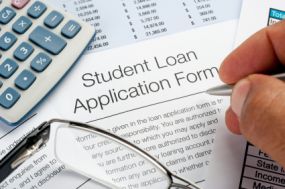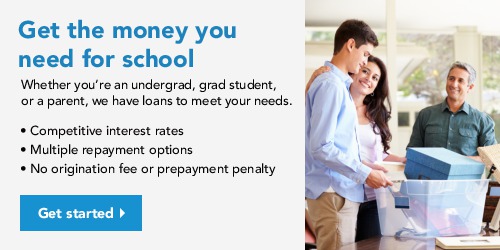What You Need to Know About Private Lender Student Loans
 Borrowing by students is on the rise because the price of attending college has skyrocketed. Before taking on debt it’s important to understand student loans, including repayment terms, who the lenders are, and what happens if you default.
Borrowing by students is on the rise because the price of attending college has skyrocketed. Before taking on debt it’s important to understand student loans, including repayment terms, who the lenders are, and what happens if you default.
NOTE –The information that follows relates to private student loans. Please be sure to read the Student Loans for College page, too, because it highlights government loan programs.
Highlighted Private Student Loan Programs for College
Every student loan program is unique. The Financial Aid Finder staff has researched several reputable private student loan programs. Each loan profile page includes information about the lender, lending rates, loan fees, repayment terms, and more. Highlighted programs:
- Sallie Mae Student Loans
- Discover Student Loans
- Chase Select Private Student Loans
- PNC Student Loans
- Charter One Student Loan
- Fifth Third Bank College Loans
- Wells Fargo College Loan Programs
- U.S. Bank Student Loans
- Student Funding Group Loans
- Student Loan Network Private Loans
- Texas Dow Employees Credit Union Loans
- SunTrust Education Loans
The Financial Aid Finder team makes blog posts about student loans, too. Keep an eye out for those posts!
Finally, don’t overlook the Government Student Loan information, which includes overviews of the most vital federal loan programs.
About Private Student Loans
As a borrower, who may be applying for a private student loan for college or supplemental student loans, there are a few important terms you should know.
Let’s start with interest rates. As you know, an interest rate on a student loan is the charge to you for borrowing the money, which is measured as a percentage of the initial amount borrowed (principal). Federal loan interest rates are determined by the United States government, which makes them available at the Department of Education website.
In the case of private loans for college, the banks or lending institutions determine the interest rate. They generally use one of two standard rates to do this:
- LIBOR (London Interbank Offered Rate): This is the rate that large international banks use when they are lending money to each other, and it changes every day.
- PRIME (U.S. Prime Lending Rate): This is the lowest rate that a bank with charge its customers, or the rate that the most credit-worthy people get, as determined by the Federal Reserve Board.
The main difference between the two is that the LIBOR fluctuates and that the PRIME stays the same for extended periods of time. You can find out what both of these rates are by checking the major financial news outlets, like Bloomberg.
What you Need to Know About LIBOR and PRIME
These interest rates will help you determine which loan is going to cost you the least amount of money to payback. You should be looking for a loan with the lowest interest rate possible.
Interest rates are not the only factors in determining how much a loan will cost you. You should also look at repayment terms. There are three main types of student loan repayment options:
- IMMEDIATE: Students begin making payments while they are in school. This will keep you payments down, and shorten the amount of time it takes to fully repay your debt.
- INTEREST ONLY: Similar to “immediate,” students can choose to make just payments on the interest while still in school.
- DEFERRED: Students don’t start paying off the loan until after they graduate, sometimes as long as six months after school ends.
Not every private student loan lender offers all of these options.
It is a combination of interest rate and repayment terms that will help you determine how much it will cost you to take out a private student loan for college.


